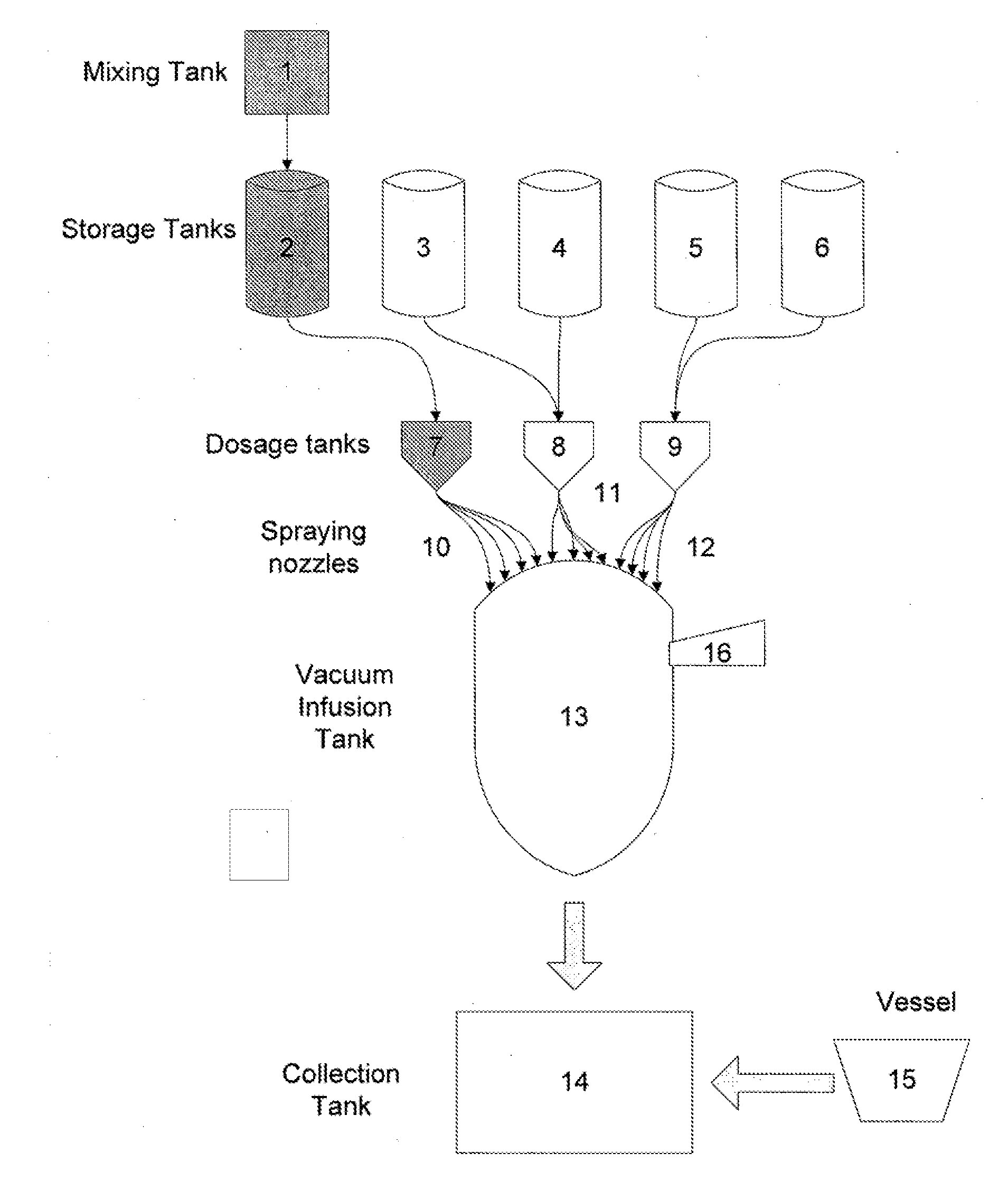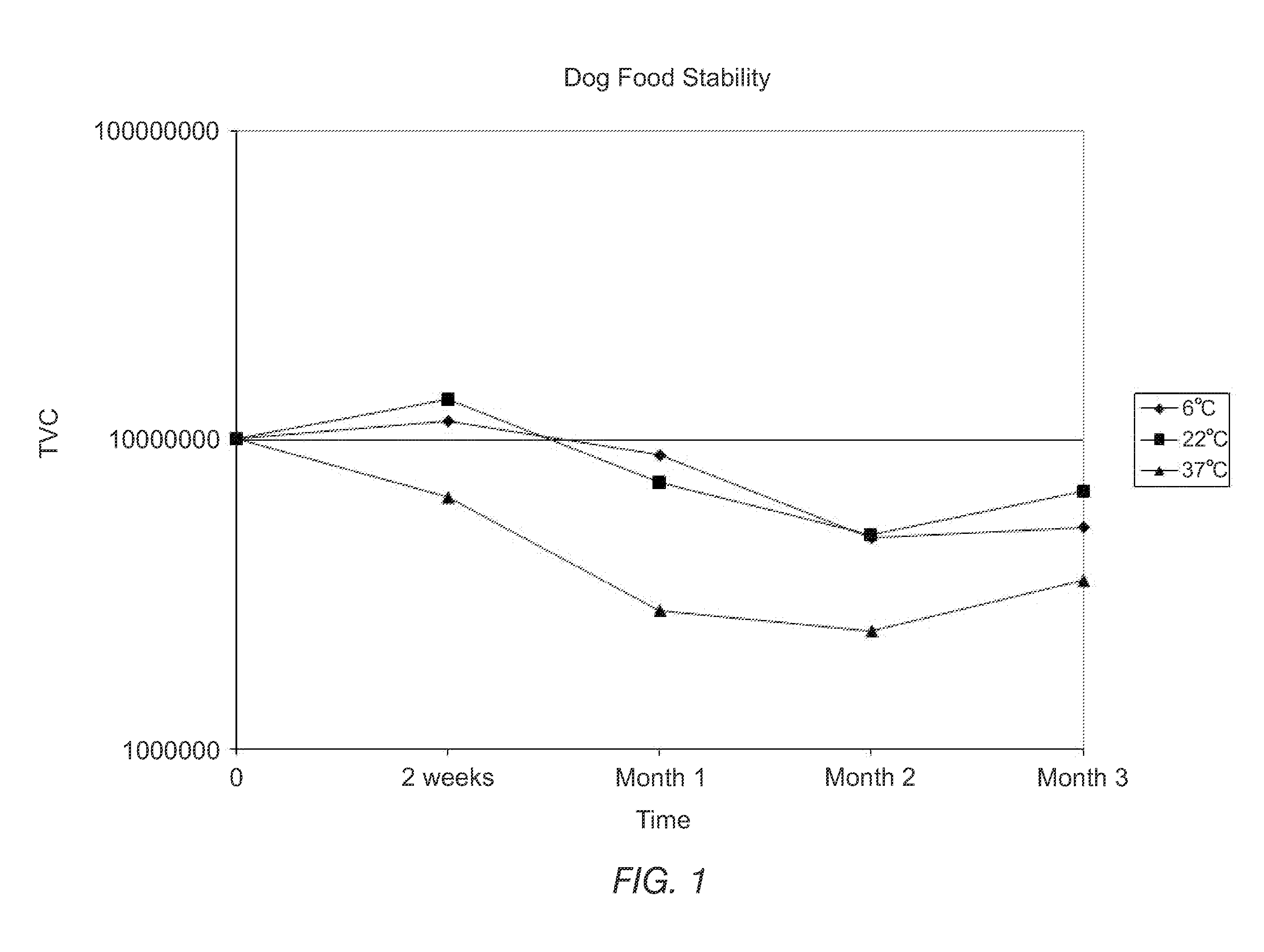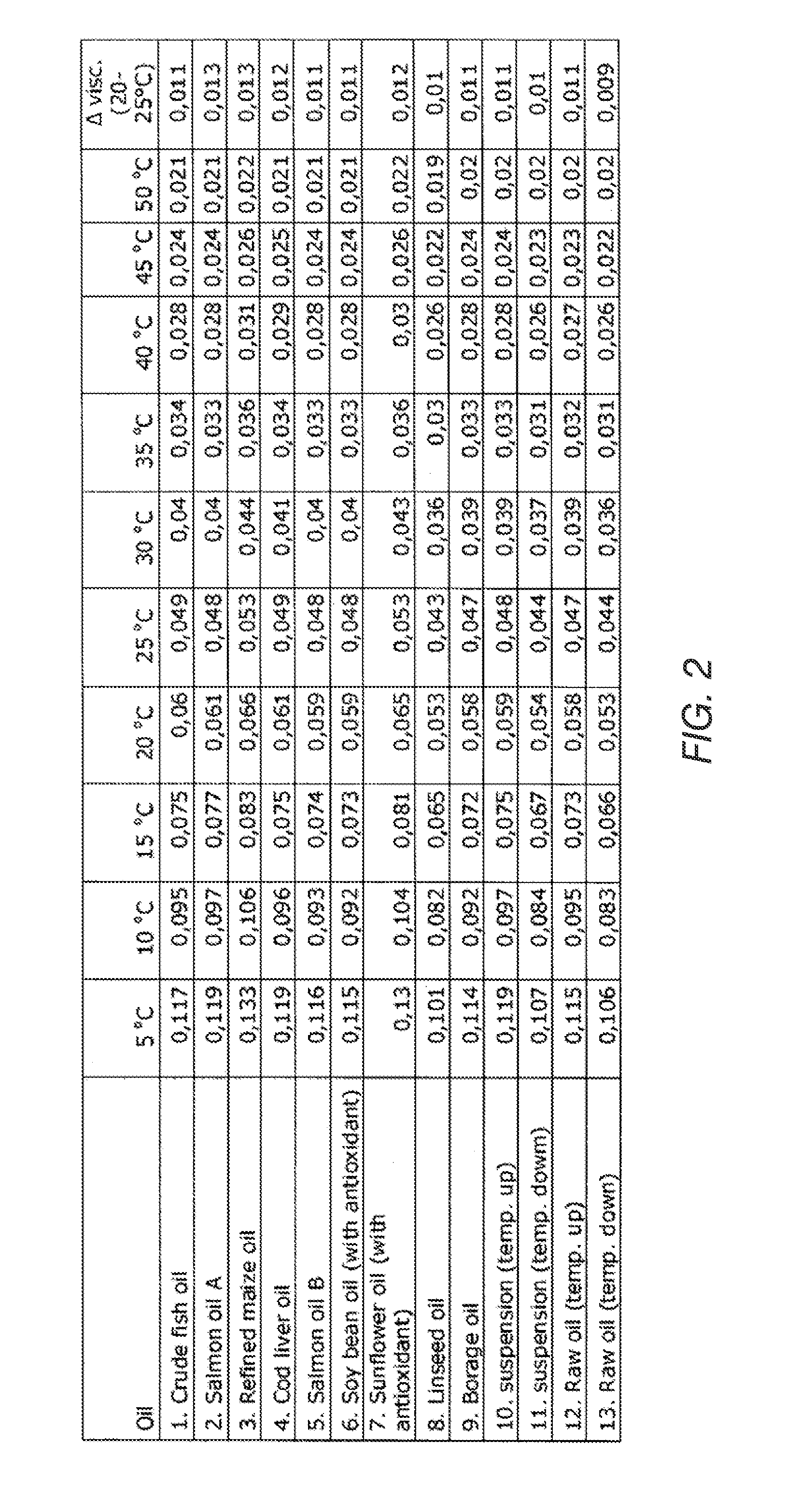Probiotic pet food
a pet food and probiotic technology, applied in the field of pet food, can solve the problems of increasing the susceptibility of the gut to colonisation of pathogenic bacteria, using antibiotics, adversely affecting the gut flora,
- Summary
- Abstract
- Description
- Claims
- Application Information
AI Technical Summary
Benefits of technology
Problems solved by technology
Method used
Image
Examples
example 1
[0339]Vacuum core liquid coating is the process, which is used to place the bacteria within the kibble / porous structure.
[0340]The manufacturing process is carried out in a sealed environment.
[0341]Firstly the non-coated product is coming out of dryer (vertical drying system with 2 levels) at a temperature of 45° C. to 60° C. (depending on data received from extruder). Then the non-coated product is going into the drum of the vacuum core coater. Coater is closing and starts moving (inside pressure 1 bar) the product and is creating the vacuum atmosphere. During the process vacuum liquid coating, fats are vaporised onto the product under vacuum condition (0.5 bar) Temperature of liquid during process is 20° C. to 25° C. optimum 22° C. and preservation in container is 22° C. Normal pressure (1 bar) condition is restored inside the coater. Fish oil mixed with probiotic product ingredient (Enterococcus faecum or other) is sprayed onto the product under a new vacuum con...
example 2
[0342]Over a three year period, Probiotics International Ltd. carried out definitive work at Birmingham University investigating improved methods of protecting micro-organisms. This work has been applied in practice but is under constant review as further research findings come to hand.
[0343]This method describes the enumeration of Streptococcus and Enterococcus spp. by a surface inoculation technique.
[0344]The method is applicable to powder, pellet and oil based (including paste) food supplement such as probiotics.
[0345]For the purposes of this test, streptococcus (including Enterococcus) species are defined as bacteria forming typical colonies under the conditions of the test, are Gram-positive cocci and give a negative reaction in the catalase test.
[0346]Apparatus:[0347]Automatic pipettor, 0.02 ml[0348]Glass beads, sterile[0349]Incubator set at 30+ / −1° C. (or 37+ / −1° C., or 22+ / −1° C.)[0350]Microscope[0351]Pipettor calibrated to deliver 20 μl, 1.0 ml and 9.0 ml with associated st...
example 3
Measuring the Viscosity of Selected Oils
[0417]Equipment: Dynamic rheometers Physica MCR 301 (Anton Paar GmbH, Germany), C-PTD200 Peltie temperature control and CC27 coaxial cylinder measuring system (in / out diameter 26.66 and 28.92 mm)
[0418]Method: The viscosity of the oils was measured at turning speed of 180 rpm; at temperature range of 5 to 50° C., heating rate was 0.5° C. / min, viscosity was registered after each 1° C. Two parallels of samples were measured. The table of FIG. 2 lists the average viscosity (Pa·s) of the oils.
[0419]UPP, Belgium supplied:[0420]1. Crude fish oil[0421]2. Salmon oil A[0422]3. Refined maize oil[0423]4. Cod liver oil
[0424]Vobra Special Petfoods BV, Netherlands Supplied:[0425]5. Salmon oil B[0426]6. Soybean oil (with antioxidant)[0427]7. Sunflower oil (with antioxidant)[0428]8. Linseed oil[0429]9. Borage oil
[0430]Results: One of the oils, Salmon oil A (supplied by United Petfoods (UPP) Belgium), displays unique viscosity properties over the remaining oils...
PUM
| Property | Measurement | Unit |
|---|---|---|
| Temperature | aaaaa | aaaaa |
| Temperature | aaaaa | aaaaa |
| Time | aaaaa | aaaaa |
Abstract
Description
Claims
Application Information
 Login to View More
Login to View More - R&D
- Intellectual Property
- Life Sciences
- Materials
- Tech Scout
- Unparalleled Data Quality
- Higher Quality Content
- 60% Fewer Hallucinations
Browse by: Latest US Patents, China's latest patents, Technical Efficacy Thesaurus, Application Domain, Technology Topic, Popular Technical Reports.
© 2025 PatSnap. All rights reserved.Legal|Privacy policy|Modern Slavery Act Transparency Statement|Sitemap|About US| Contact US: help@patsnap.com



